By Leen Randell
Updated: Jul 19, 2024
10 Best Herbal Creams For Chills
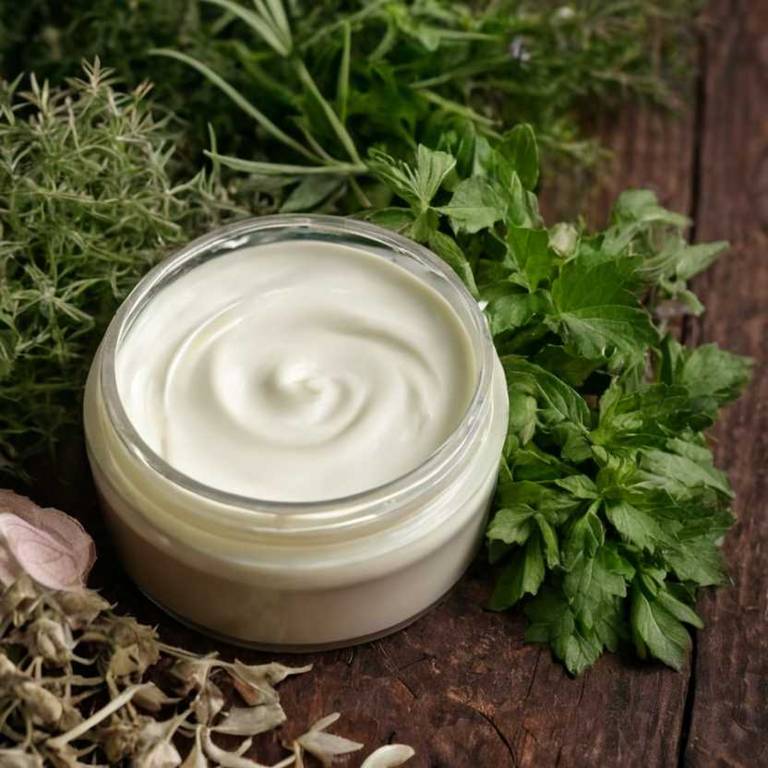
Herbal creams for chills are topical ointments infused with natural herbs and essential oils that help alleviate chills, fever, and body aches.
They work by promoting relaxation, reducing inflammation, and improving circulation. Examples of herbal creams for chills include peppermint, eucalyptus, and ginger-based creams.
These creams improve lives by providing quick relief from symptoms, promoting restful sleep, and reducing the need for over-the-counter medications, making them an effective and natural solution for managing chills.
The following article describes in detail the most important creams for chills, including medicinal properties, parts of herbs to use, and recipes for preparations.
- 1. Zingiber officinale
- 2. Melissa officinalis
- 3. Cymbopogon citratus
- 4. Aloe vera
- 5. Calendula officinalis
- 6. Echinacea angustifolia
- 7. Taraxacum officinale
- 8. Matricaria chamomilla
- 9. Foeniculum vulgare
- 10. Pimenta dioica
- What is the best combination of herbal creams to use for chills?
- What ailments similar to chills are treated with herbal creams?
1. Zingiber officinale
Zingiber officinale, also known as ginger, creams helps with chills because of its natural warming and anti-inflammatory properties.
Ginger contains compounds like gingerol and shogaol, which stimulate the body's circulation and help to increase blood flow to the skin, thereby reducing the sensation of cold. Additionally, its analgesic and antispasmodic properties can help to soothe and relax the muscles, further alleviating the discomfort associated with chills.
Regular application of ginger creams may provide relief and comfort, making it a popular remedy for colds and flu.

Medicinal Constituents
The list below shows the primary medicinal constituents in Zingiber officinale creams that help with chills.
- Gingerols: These compounds, particularly 6-gingerol and 8-gingerol, have anti-inflammatory and antipyretic properties, which help to reduce fever and alleviate chills.
- Shogaols: Similar to gingerols, shogaols also possess anti-inflammatory and antipyretic properties, helping to combat chills and fever by reducing the body's temperature and alleviating discomfort.
- Curcuminoids: These compounds have potent anti-inflammatory and antioxidant properties, which help to reduce inflammation and alleviate chills by protecting the body from oxidative stress and promoting overall well-being.
Parts Used
The list below shows the primary parts of ginger used to make creams for chills.
- Rhyzomes: The most commonly used part for its anti-inflammatory and warming properties, which help to relieve chills and body aches.
- Leaves: Used for their antiseptic and antiviral properties, which help to soothe and calm the skin affected by chills.
- Roots: Utilized for their medicinal properties, which aid in reducing fever and inflammation associated with chills.
Quick Recipe
The following recipe gives a procedure to make a basic ginger for chills.
- Infuse 1 cup of chopped zingiber officinale roots in 2 cups of boiling water for 10 minutes.
- Strain the infused liquid through a cheesecloth into a clean bowl and discard the solids.
- Mix 1/2 cup of beeswax with 1/4 cup of coconut oil in a small saucepan over low heat.
- Combine the infused liquid with 1 tablespoon of vitamin e oil and 1 teaspoon of honey in a separate bowl.
- Gradually add the infused liquid mixture to the beeswax-coconut oil mixture while stirring constantly until smooth.
2. Melissa officinalis
Melissa officinalis, also known as lemon balm, creams helps with chills because of its unique ability to soothe and calm the body.
The active compounds present in Melissa officinalis, such as rosmarinic acid and melissic acid, have natural anti-inflammatory and antiviral properties that help to reduce body temperature and alleviate cold symptoms.
By applying a Melissa officinalis cream to the skin, these compounds are absorbed, providing rapid relief from chills and promoting a sense of warmth and comfort.
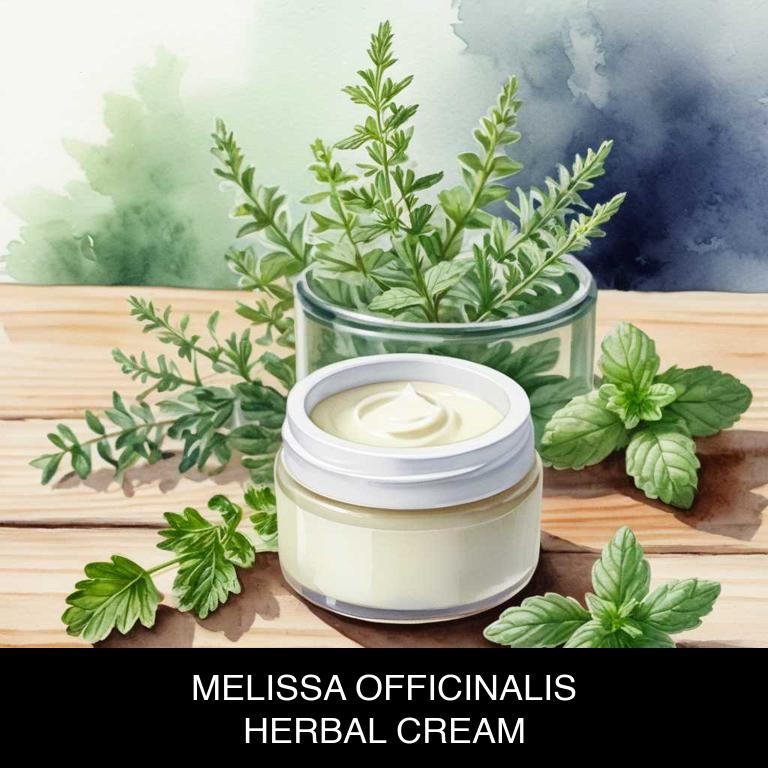
Medicinal Constituents
The list below shows the primary medicinal constituents in Melissa officinalis creams that help with chills.
- Rosmarinic acid: This phenolic compound helps alleviate chills by acting as an antioxidant and anti-inflammatory agent, reducing fever and promoting a sense of calmness.
- Linalool: A terpene found in Melissa officinalis, linalool exhibits antispasmodic and antiviral properties, which help to soothe the body and reduce chills associated with viral infections or other conditions.
- Limonene: A monoterpene present in Melissa officinalis, limonene possesses antiseptic and anti-inflammatory properties, helping to combat the underlying causes of chills and promoting a sense of well-being.
Parts Used
The list below shows the primary parts of lemon balm used to make creams for chills.
- Leaves: Rich in essential oils, which provide antibacterial and anti-inflammatory properties to help soothe chills.
- Flowers: Contain flavonoids and terpenes that have a calming effect, helping to reduce fever and alleviate chills.
- Stems: Rich in essential oils and other bioactive compounds that contribute to their anti-inflammatory and antiseptic properties, making them useful in creams for chills.
Quick Recipe
The following recipe gives a procedure to make a basic lemon balm for chills.
- Infuse 2 tablespoons of melissa officinalis flowers in 1 cup of boiling water for 5-7 minutes.
- Strain the infusion through a cheesecloth into a clean bowl and discard the solids.
- Combine 1/2 cup of distilled water with 1 tablespoon of beeswax and 1 tablespoon of coconut oil in a saucepan.
- Heat the mixture over low heat, stirring occasionally, until the beeswax and coconut oil melt and emulsify.
- Pour the infused melissa officinalis liquid into the cooled cream mixture and whip until smooth and creamy.
3. Cymbopogon citratus
Cymbopogon citratus, also known as lemongrass, creams helps with chills because of its natural properties.
The antiviral and antibacterial properties in lemongrass help to combat the underlying cause of chills, which is often a viral or bacterial infection. The anti-inflammatory properties also help to reduce body temperature and alleviate discomfort. Additionally, lemongrass has a warming effect, which helps to stimulate blood circulation and relieve chills.
This natural remedy provides a soothing and comforting relief from the symptoms of chills.
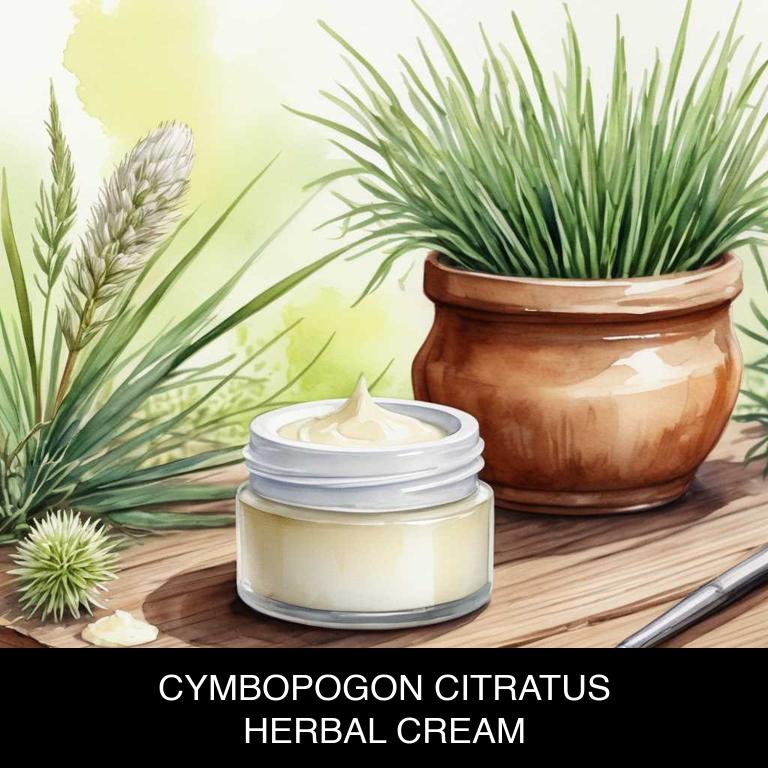
Medicinal Constituents
The list below shows the primary medicinal constituents in Cymbopogon citratus creams that help with chills.
- Citral: Citral is a terpene that acts as an antipyretic, helping to reduce fever and alleviate chills by inhibiting the production of prostaglandins, which contribute to inflammation and fever.
- Geraniol: Geraniol is a terpene that has a cooling effect, helping to reduce body temperature and alleviate chills by dilating blood vessels and increasing blood flow to the skin.
- Limonene: Limonene is a terpene that has a stimulating effect on the immune system, helping to increase the production of white blood cells and reduce inflammation, which can contribute to the development of chills.
Parts Used
The list below shows the primary parts of lemongrass used to make creams for chills.
- Leaves: Used due to their high citral content, which provides a cooling and refreshing effect.
- Rhyzomes: Used due to their strong aroma and medicinal properties, which help to reduce chills and fever.
- Stems: Used due to their ability to provide a steady release of essential oils, helping to maintain a consistent cooling effect.
Quick Recipe
The following recipe gives a procedure to make a basic lemongrass for chills.
- Harvest 250g of fresh cymbopogon citratus leaves and wash them thoroughly with distilled water for 10 minutes.
- Steam distill the leaves for 2 hours to obtain 50g of essential oil.
- In a heat-resistant container, melt 500g of cetyl alcohol and 250g of glycerin over low heat.
- Mix 10g of essential oil with 100g of beeswax and heat the mixture for 10 minutes.
- Combine the cooled mixture with the melted cetyl alcohol and glycerin mixture and stir until creamy.
4. Aloe vera
Aloe vera, also known as aloe, creams helps with chills because of its unique properties.
The gel extracted from the aloe plant has anti-inflammatory and antimicrobial properties that soothe and calm the skin. When applied topically, it can help to reduce body temperature by improving blood circulation and promoting sweat evaporation. Additionally, aloe vera creams can also provide hydration to the skin, which is often lost during chills, helping to alleviate the discomfort and promote a sense of well-being.
This natural remedy is a popular alternative to over-the-counter medications.

Medicinal Constituents
The list below shows the primary medicinal constituents in Aloe vera creams that help with chills.
- Phenolic acids: These compounds have anti-inflammatory properties, which can help reduce body temperature and alleviate chills by inhibiting the production of pro-inflammatory cytokines.
- Terpenoids: These bioactive compounds have antipyretic properties, which can help lower body temperature and reduce chills by inhibiting the production of prostaglandins, which are involved in the regulation of body temperature.
- Anthraquinones: These compounds have anti-inflammatory and antipyretic properties, which can help reduce chills and body temperature by inhibiting the production of pro-inflammatory cytokines and prostaglandins.
Parts Used
The list below shows the primary parts of aloe used to make creams for chills.
- Leaves: Rich in gel that has anti-inflammatory and soothing properties, which helps to relieve chills and skin irritation.
- Gel (from leaves): The clear, jelly-like substance inside the leaves has a cooling effect and helps to reduce inflammation and itching associated with chills.
- Aloe vera extract (from leaves): A concentrated form of the gel that is often used in creams to provide instant relief from chills and soothe skin irritations.
Quick Recipe
The following recipe gives a procedure to make a basic aloe for chills.
- Gather 1 cup of aloe vera gel from 3-4 fresh aloe leaves and 2 tablespoons of shea butter.
- Melt 1/4 cup of coconut oil in a double boiler and add 2 tablespoons of beeswax.
- Whip 1/2 cup of heavy cream until stiff peaks form and set aside for 10 minutes.
- Combine the melted coconut oil mixture with the whipped cream and mix until smooth consistency is achieved.
- Add the aloe vera gel and shea butter mixture to the combined mixture and stir until well combined.
5. Calendula officinalis
Calendula officinalis, also known as pot marigold, creams helps with chills because of its anti-inflammatory and antimicrobial properties.
The cream's active compounds, including triterpenoids and flavonoids, help soothe and calm the skin, reducing redness and inflammation associated with chills. Additionally, its ability to promote wound healing and support the skin's natural barrier function can help alleviate the discomfort caused by chills.
This makes Calendula officinalis cream a popular natural remedy for soothing and calming the skin during episodes of chills.

Medicinal Constituents
The list below shows the primary medicinal constituents in Calendula officinalis creams that help with chills.
- Triterpenoids: These compounds help reduce inflammation and promote wound healing, which can indirectly alleviate the discomfort and chill associated with colds and infections.
- Flavonoids: As a natural antihistamine and anti-inflammatory, quercetin can help reduce fever and alleviate symptoms of chills by blocking the release of pro-inflammatory chemicals.
- Sesquiterpenes: Calendulin, a sesquiterpene glycoside, has been shown to exhibit antimicrobial properties, which can help combat underlying infections that may be contributing to chills, thereby reducing the severity and duration of symptoms.
Parts Used
The list below shows the primary parts of pot marigold used to make creams for chills.
- Flowers: They are used to make creams for chills due to their anti-inflammatory and antiseptic properties, which help soothe and calm irritated skin.
- Leaves: They are used to make creams for chills due to their ability to promote blood flow and reduce heat in the body, helping to alleviate chills.
- Seeds: They are used to make creams for chills due to their content of sesquiterpenes, which have anti-inflammatory properties that help to reduce pain and discomfort associated with chills.
Quick Recipe
The following recipe gives a procedure to make a basic pot marigold for chills.
- Infuse the calendula flowers in a carrier oil such as sweet almond oil 1 cup 1 cup calendula flowers.
- Strain the oil mixture after 2 to 3 weeks of infusion to remove the plant material.
- Combine the infused oil with beeswax and shea butter in a double boiler.
- Heat the mixture until the beeswax and shea butter are fully melted and well combined.
- Pour the mixture into a container and let it cool and solidify completely.
6. Echinacea angustifolia
Echinacea angustifolia, also known as Kansas coneflower, creams helps with chills because they contain compounds that stimulate the immune system and reduce inflammation.
The antiviral properties in Echinacea angustifolia help to combat viral infections that cause chills. Additionally, the cream's anti-inflammatory properties help to soothe and calm the body, reducing the discomfort associated with chills.
By supporting the immune system and reducing inflammation, Echinacea angustifolia creams can help to alleviate chills and promote overall well-being.
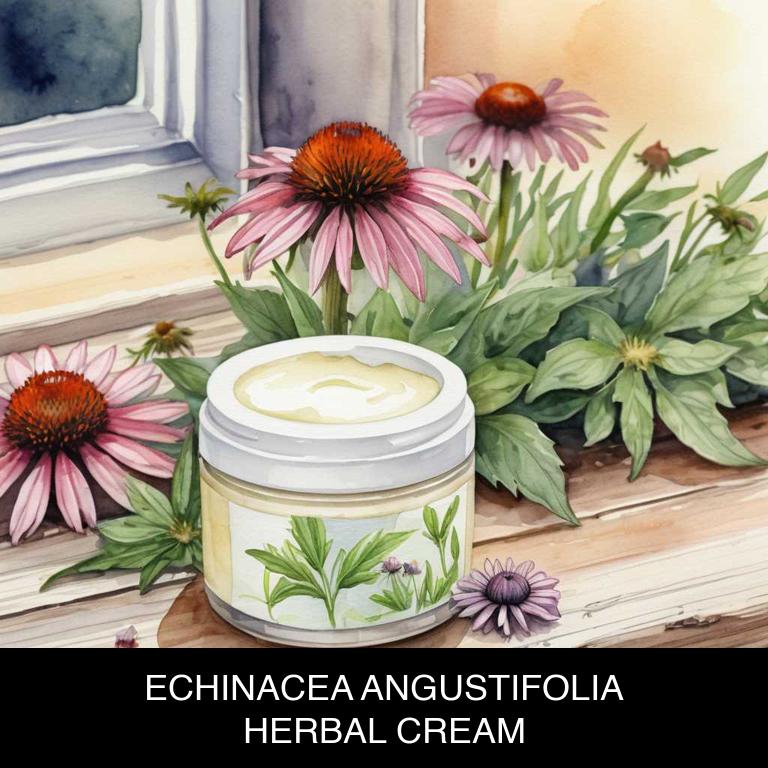
Medicinal Constituents
The list below shows the primary medicinal constituents in Echinacea angustifolia creams that help with chills.
- Iridoid glycosides: These compounds help reduce inflammation and fever, which are often associated with chills, by inhibiting the production of pro-inflammatory cytokines.
- Alkaloids: Alkaloids found in Echinacea angustifolia, such as cichorine, have antimicrobial properties, which can help combat underlying infections that may cause chills.
- Phenolic acids: These compounds exhibit anti-inflammatory and antioxidant properties, which can help alleviate symptoms of chills and fever by reducing oxidative stress and inflammation.
Parts Used
The list below shows the primary parts of kansas coneflower used to make creams for chills.
- Roots: Roots are the primary part used due to their high concentration of alkylamides, which have anti-inflammatory and immune-boosting properties.
- Leaves: Leaves are also used in creams for chills due to their content of flavonoids, which have antioxidant and anti-inflammatory effects.
- Stems: Stems are sometimes used in addition to roots and leaves due to their minor but still significant content of phenolic compounds, which contribute to the overall therapeutic benefits.
Quick Recipe
The following recipe gives a procedure to make a basic kansas coneflower for chills.
- Combine 100g of dried echinacea angustifolia roots with 500ml of boiling water to create an herbal infusion.
- Steep the mixture for 5-10 minutes and then strain it through a cheesecloth to remove solids.
- Mix 20g of beeswax with 50g of coconut oil in a double boiler to melt the ingredients.
- Add 50ml of the echinacea angustifolia infusion to the melted wax and oil mixture and stir well.
- Pour the mixture into a container and let it cool and solidify at room temperature for 30 minutes.
7. Taraxacum officinale
Taraxacum officinale, also known as dandelion, creams helps with chills because it contains active compounds like sesquiterpene lactones and taraxasterol, which have anti-inflammatory and immunomodulatory properties.
These compounds help to reduce fever and alleviate symptoms associated with chills, such as body aches and fatigue. Additionally, the cream's soothing and cooling effect on the skin can help to calm the body and promote a sense of relaxation, making it easier to recover from illness.
It may also aid in promoting a healthy immune response.
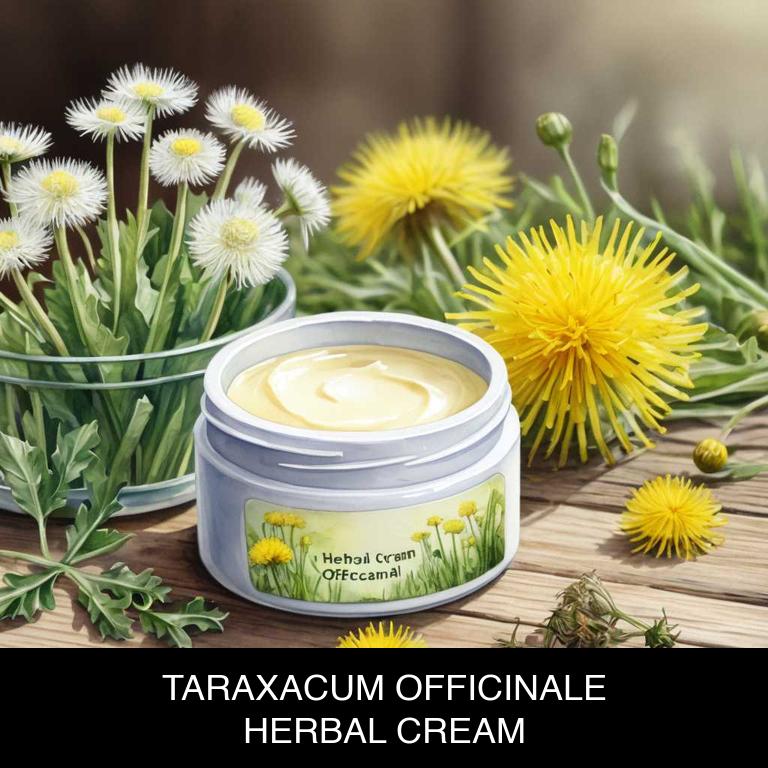
Medicinal Constituents
The list below shows the primary medicinal constituents in Taraxacum officinale creams that help with chills.
- Taraxasterol: Taraxasterol, a triterpenoid saponin, has anti-inflammatory properties that can help reduce body temperature and alleviate chills associated with fever or infection.
- Apigenin: Apigenin, a flavonoid phenolic compound, has antipyretic and anti-inflammatory effects that can help lower body temperature and relieve chills and fever.
- Taraxasterol acetate: Taraxasterol acetate, another triterpenoid saponin, may exhibit antipyretic and anti-inflammatory activities, helping to reduce body temperature and alleviate chills.
Parts Used
The list below shows the primary parts of dandelion used to make creams for chills.
- Leaves: They are rich in flavonoids and saponins, which are believed to have anti-inflammatory and antiviral properties that help to reduce chills and fever.
- Roots: The roots of Taraxacum officinale contain inulin, a type of prebiotic fiber that can help to boost the immune system and reduce inflammation.
- Flowers: The flowers of Taraxacum officinale are used to make a tea or infusion that can help to reduce fever and alleviate chills due to their diaphoretic and antipyretic properties.
Quick Recipe
The following recipe gives a procedure to make a basic dandelion for chills.
- Extract 20 grams of dried taraxacum officinale root and 10 grams of dried flowers in a glass jar.
- Mix the extracted plant material with 100 ml of jojoba oil and 50 ml of distilled water.
- Heat the mixture in a double boiler for 30 minutes at 60 degrees celsius.
- Strain the mixture through a cheesecloth into a clean glass container.
- Allow the mixture to cool and thicken for 2 hours before applying to the skin.
8. Matricaria chamomilla
Matricaria chamomilla, also known as chamomile, creams helps with chills because of its soothing and anti-inflammatory properties.
The active ingredients in chamomile creams, such as apigenin and luteolin, help to calm the body's nervous system, reducing muscle tension and promoting relaxation. This can help to alleviate chills and fever by reducing the body's stress response and promoting a sense of calm and well-being.
Additionally, chamomile's antispasmodic properties can help to relieve muscle cramps and spasms associated with chills.
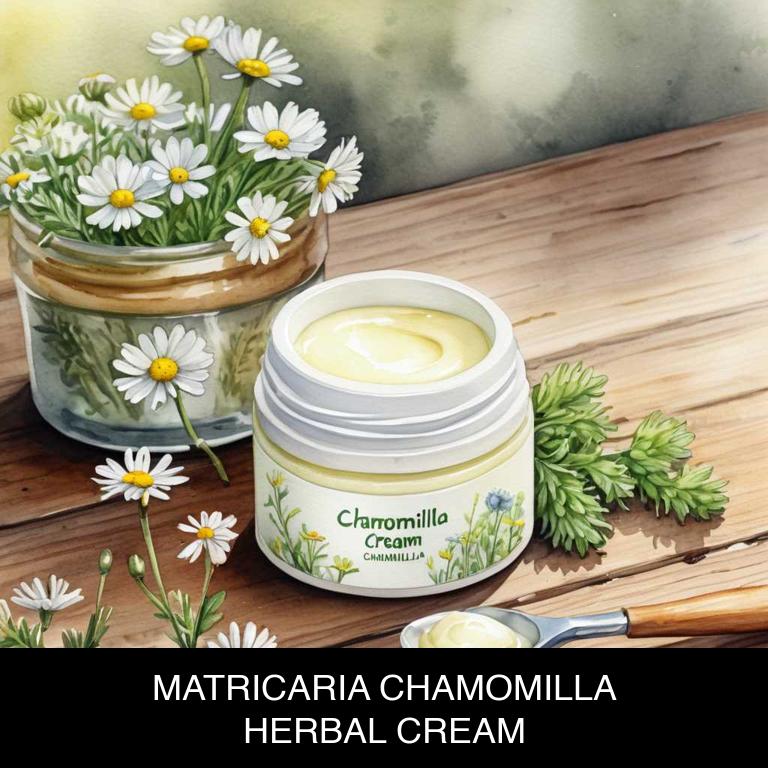
Medicinal Constituents
The list below shows the primary medicinal constituents in Matricaria chamomilla creams that help with chills.
- Apigenin: A flavonoid that has anti-inflammatory and antispasmodic properties, helping to reduce muscle tension and alleviate chills.
- Bisabolol: A sesquiterpene alcohol that has anti-inflammatory and analgesic properties, providing relief from pain and discomfort associated with chills.
- Farnesene: A sesquiterpene that has antispasmodic and anti-inflammatory properties, helping to relax muscles and reduce fever, which may contribute to chills.
Parts Used
The list below shows the primary parts of chamomile used to make creams for chills.
- Flowers: They are used due to their high content of apigenin, an antioxidant and anti-inflammatory compound that helps soothe and calm the skin.
- Leaves: They are used for their analgesic and anti-inflammatory properties, which help to reduce pain and inflammation associated with chills.
- Seeds: They are used for their sedative and anti-inflammatory properties, which help to calm the body and reduce inflammation caused by chills.
Quick Recipe
The following recipe gives a procedure to make a basic chamomile for chills.
- Harvest 100 grams of dried matricaria chamomilla flowers from a trusted supplier at 8 am.
- Combine 100 grams of the dried flowers with 500 milliliters of carrier oil such as sweet almond oil in a clean glass container.
- Steep the mixture in a cool dark place for 2 weeks shaking the container every day.
- Strain the mixture through a cheesecloth into another clean glass container discarding the solids immediately.
- Blend the resulting infused oil with 20 grams of beeswax and 10 grams of shea butter then heat the mixture in a double boiler until the beeswax and shea butter are fully melted.
9. Foeniculum vulgare
Foeniculum vulgare, also known as fennel, creams helps with chills because of its warming and soothing properties.
The active compounds in fennulic acid and anethole work together to increase blood circulation, which helps to counteract the cold and numb sensations associated with chills. Additionally, fennel's anti-inflammatory properties help to reduce muscle tension and discomfort, promoting overall relaxation and warmth.
This natural remedy provides relief from chills, allowing the body to recover and feel more comfortable.
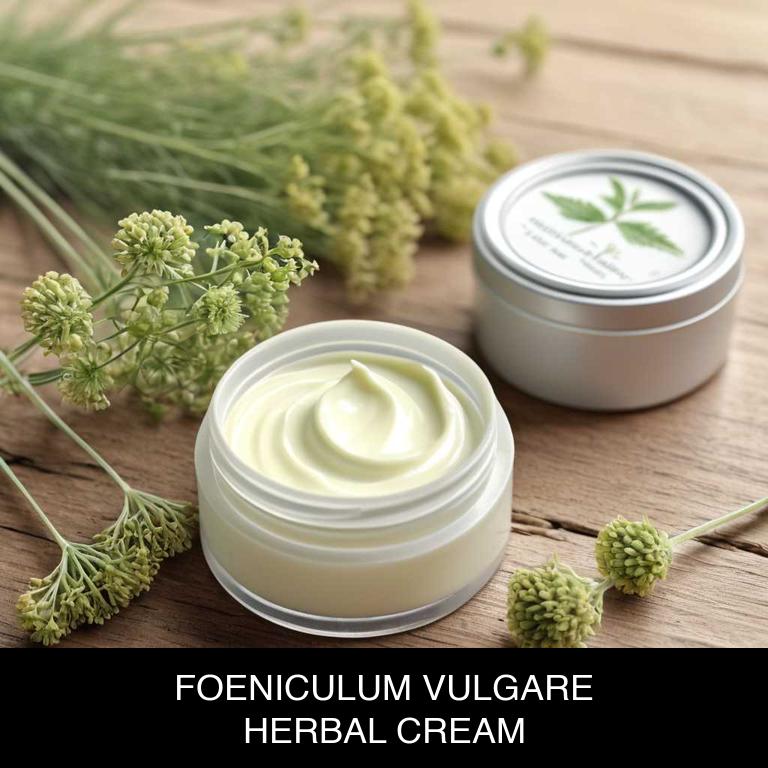
Medicinal Constituents
The list below shows the primary medicinal constituents in Foeniculum vulgare creams that help with chills.
- Bisabolol: Bisabolol has anti-inflammatory properties that help reduce fever and alleviate chills by blocking the production of pro-inflammatory mediators.
- Anethole: Anethole acts as a vasodilator, helping to increase blood flow and reduce the sensation of chills by widening blood vessels and promoting sweating.
- Fenchone: Fenchone has analgesic and antipyretic properties that help alleviate pain and reduce fever associated with chills by inhibiting the production of pro-inflammatory cytokines.
Parts Used
The list below shows the primary parts of fennel used to make creams for chills.
- Seeds: They are commonly used due to their high content of volatile oils, particularly anethole, which has anti-inflammatory and antispasmodic properties that help relieve chills and body aches.
- Leaves: They are often used in creams for their ability to reduce fever and alleviate chills due to the presence of essential oils and other compounds that have a cooling effect on the body.
- Roots: They are sometimes used in creams for their potential to reduce fever, ease body aches, and promote sweating, which helps to alleviate chills and other symptoms associated with colds and flu.
Quick Recipe
The following recipe gives a procedure to make a basic fennel for chills.
- Harvest 20g of dried foeniculum vulgare flowers and leaves and clean them thoroughly.
- Infuse the foeniculum vulgare mixture in 100ml of carrier oil like sweet almond oil for 2 weeks.
- Filter the infused oil using a cheesecloth or coffee filter to remove the solids.
- Mix the filtered oil with 10% beeswax and 5% shea butter in a double boiler.
- Whip the cooled mixture using a hand mixer to achieve a smooth and creamy texture.
10. Pimenta dioica
Pimenta dioica, also known as allspice, creams helps with chills because of its unique combination of warming and anti-inflammatory properties.
The cream's active compounds, particularly eugenol and acuminatin, work together to increase blood circulation, reduce muscle tension, and calm the nervous system. This helps to combat the cold, shivering sensation associated with chills, providing a soothing and comforting relief from the discomfort.
Regular application can also help to boost overall immune function and promote a sense of well-being.
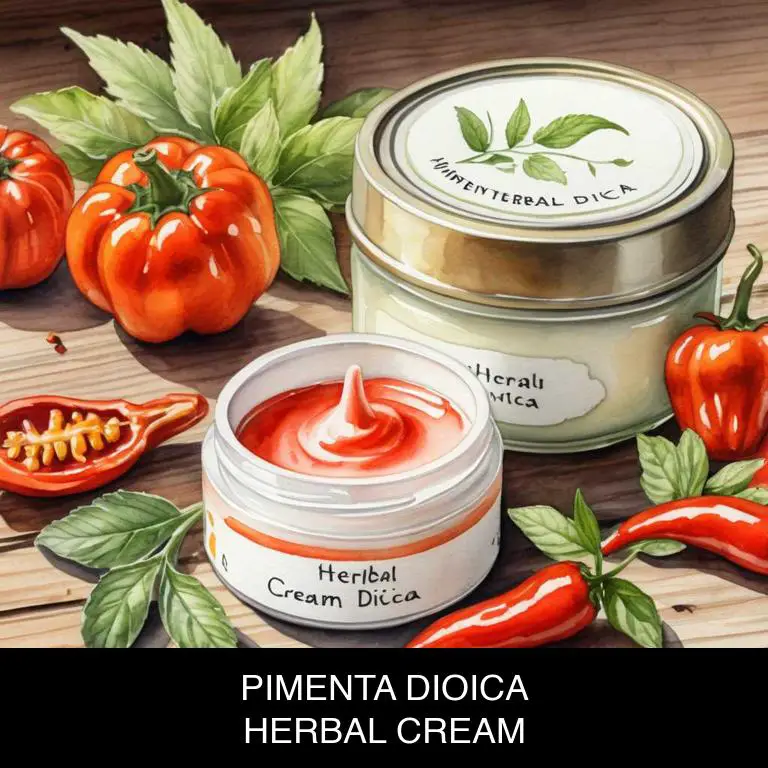
Medicinal Constituents
The list below shows the primary medicinal constituents in Pimenta dioica creams that help with chills.
- Terpenes: Terpenes, particularly eugenol, help with chills by acting as a natural analgesic and anti-inflammatory agent, reducing fever and relieving discomfort associated with chills.
- Phenolics: Phenolic compounds, including eugenol and isoeugenol, help with chills by exhibiting antimicrobial properties, which may help combat underlying infections that can cause chills, as well as by exhibiting anti-inflammatory and antioxidant properties.
- Alkaloids: Alkaloids, specifically eugenol, may help with chills by acting as a natural decongestant, helping to relieve nasal congestion and sinus pressure, which can contribute to the development of chills.
Parts Used
The list below shows the primary parts of allspice used to make creams for chills.
- Leaves: The leaves of Allspice contain compounds that help to reduce fever and alleviate chills.
- Fruits: The berries of Allspice contain oils and compounds that have anti-inflammatory and antiseptic properties, which can help to treat chills and other cold-related symptoms.
Quick Recipe
The following recipe gives a procedure to make a basic allspice for chills.
- Combine 20g of dried pimenta dioica leaves with 100ml of carrier oil in a clean glass jar.
- Steep the mixture in a cool dark place for 2 to 3 weeks or until the liquid turns brown.
- Strain the liquid through cheesecloth or a coffee filter to remove the solids.
- Mix the strained liquid with 20g of beeswax and 10ml of vitamin e oil in a double boiler.
- Heat the mixture over low heat for 10 to 15 minutes or until it reaches a creamy consistency.
What is the best combination of herbal creams to use for chills?
The best combination of herbal creams that help with chills is a blend of Peppermint and Eucalyptus oil infused creams.
Peppermint oil helps to reduce fever and ease body aches, while Eucalyptus oil provides a cooling sensation and helps to open up airways. Adding a small amount of Ginger and Cinnamon oil infused cream can also aid in warming the body and promoting circulation, helping to alleviate chills and soothe the body.
This combination provides a balanced approach to healing chills naturally.
What ailments similar to chills are treated with herbal creams?
Ailments similar to chills/creams.html">chills/creams.html">chills that are treated with herbal creams are arthritis, muscle soreness, and inflammation.
Herbal creams containing ingredients such as arnica, calendula, and St. John's Wort can help alleviate symptoms like joint pain, stiffness, and swelling associated with these conditions.
These herbs have anti-inflammatory and analgesic properties, which may provide relief from discomfort and promote healing.